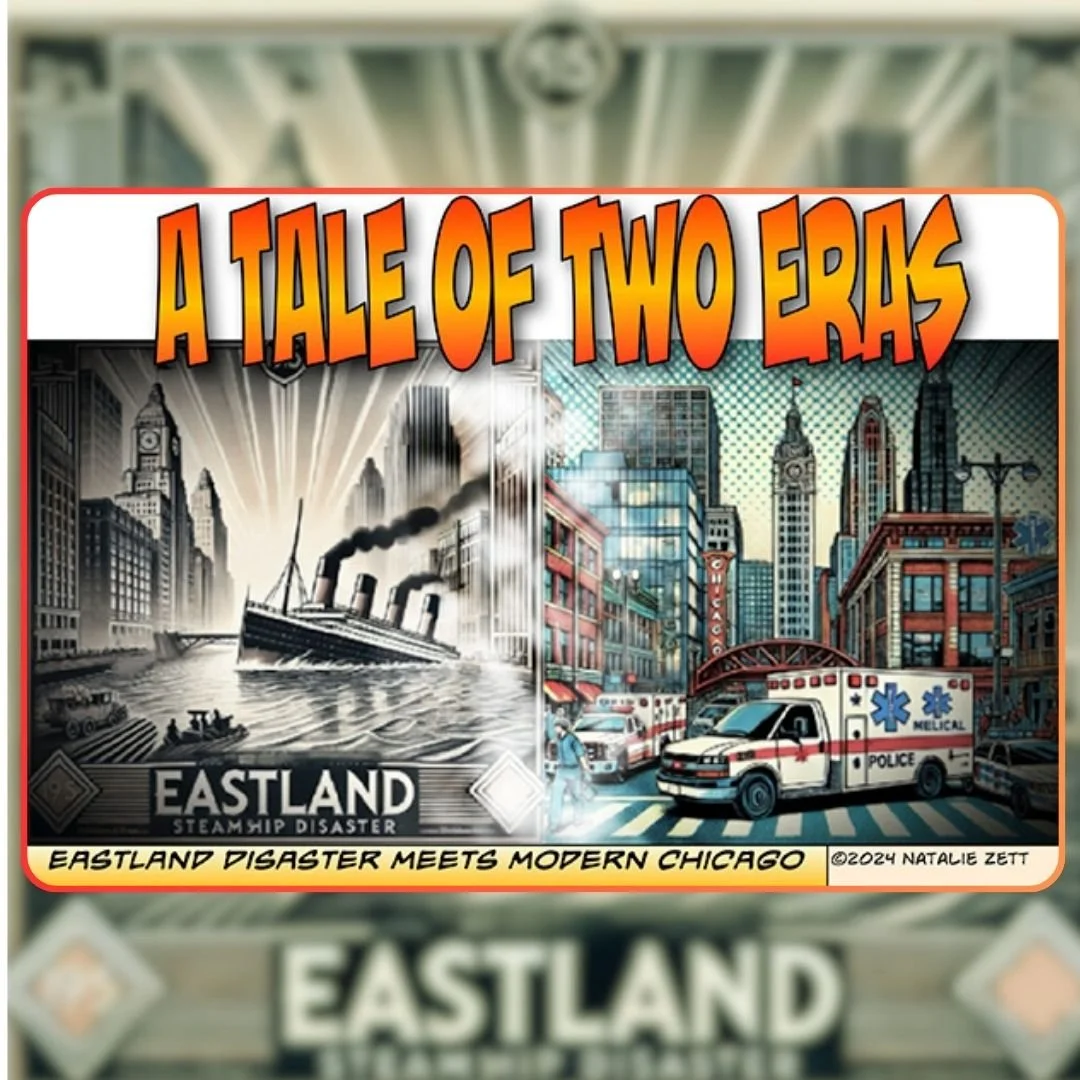A Tale of Two Eras: Eastland Disaster and Modern Chicago
What does Chicago Med have to do with the Eastland Disaster? Thanks to Google Alerts (one of a genealogist’s best friends), I now know!
To learn more about how the Chicago Med Season 10 premiere ties into the real-life Eastland Disaster, I recommend checking out this thoughtful piece by Jennie Jose over at Central Recorder: "The Unforgettable Tragedy Behind Chicago Med’s Season 10 Premiere: What You Need to Know." It does a great job connecting the show to the 1915 tragedy and describes why it still matters today.
A Tale of Two Eras: Eastland Disaster and Modern Chicago
From the Chicago River to Primetime TV: The Eastland Disaster’s Surprising Connection to Chicago Med
When I think of the Eastland Disaster—a tragedy that claimed hundreds of lives on the Chicago River in 1915—my mind doesn’t immediately leap to medical dramas on primetime TV. Yet, thanks to Google Alerts (one of a genealogist’s best friends), I was surprised to discover that the Chicago Med Season 10 premiere took inspiration from this tragic event. Who would have thought that a disaster from over a century ago would find its way into a modern television storyline?
The Chicago Med episode, titled “Sink or Swim,” opens with a mass casualty event when a commuter ship capsizes after colliding with another vessel. The scene, full of chaos and urgency, bears a haunting resemblance to what occurred on July 24, 1915, when the SS Eastland overturned in the Chicago River just 20 feet from the dock. The episode captures the panic, confusion, and sudden loss of life that defined that fateful day in Chicago’s history.
The Eastland Disaster claimed the lives of more than 800 people, many of them employees of Western Electric, who were en route to a company picnic. It remains one of the deadliest maritime disasters in American history, yet it’s a story that often slips under the radar of historical memory—overshadowed by other disasters of its time. Seeing the event brought into contemporary media, even in a fictionalized context, highlights just how enduring and relevant the tragedy still is.
Bridging the Past and Present
One of the most powerful aspects of storytelling—whether through books, podcasts, or TV dramas like Chicago Med—is how it can keep history alive. The show’s writers didn’t just create a fictional scenario; they tapped into real Chicago history to build a narrative that mirrors a dark moment in the city’s past. It’s a reminder of how tragedy doesn’t just belong in the past—it continues to influence the stories we tell today.
While Chicago Med may have modernized the circumstances, the heart of the narrative—the suddenness of disaster, the scramble to save lives, and the overwhelming emotional toll—remains strikingly similar. In the early hours after the Eastland capsized, medical professionals, police, and volunteers worked frantically to pull survivors from the water and recover those who didn’t make it. The scene was one of devastation, with makeshift morgues set up along the riverbanks and hospitals flooded with the injured.
The power of TV shows like Chicago Med is that they remind us of the people behind the headlines—the responders, the victims, the families left behind. Through modern media, these stories continue to resonate, bringing history to new audiences in ways that facts and figures often can’t.
Why the Eastland Disaster Still Matters Today
The Eastland Disaster isn’t just a historical footnote—it’s a cautionary tale about human error, negligence, and the price of ignoring safety in pursuit of profit. But it’s also a reminder of the incredible resilience of the people who survived, and those who stepped up to help in the aftermath. As a history enthusiast and family researcher, I’ve been digging into the untold stories of the Eastland for years, and I’m continually amazed by how deeply this event impacted Chicago and its people.
A Tale of Two Eras: Art Meets History
This connection between the Eastland and Chicago Med also inspired my latest graphic, “A Tale of Two Eras: Eastland Disaster Meets Modern Chicago.” In this art piece, I’ve combined imagery from the 1915 tragedy with a modern-day Chicago scene—showing how the city’s past continues to influence its present. The blending of these two eras visually represents the ongoing dialogue between history and today’s culture.
As with many historical events, the Eastland Disaster has evolved from something that happened in the past to something that continues to shape the present—whether in media, art, or the collective memory of a city.

